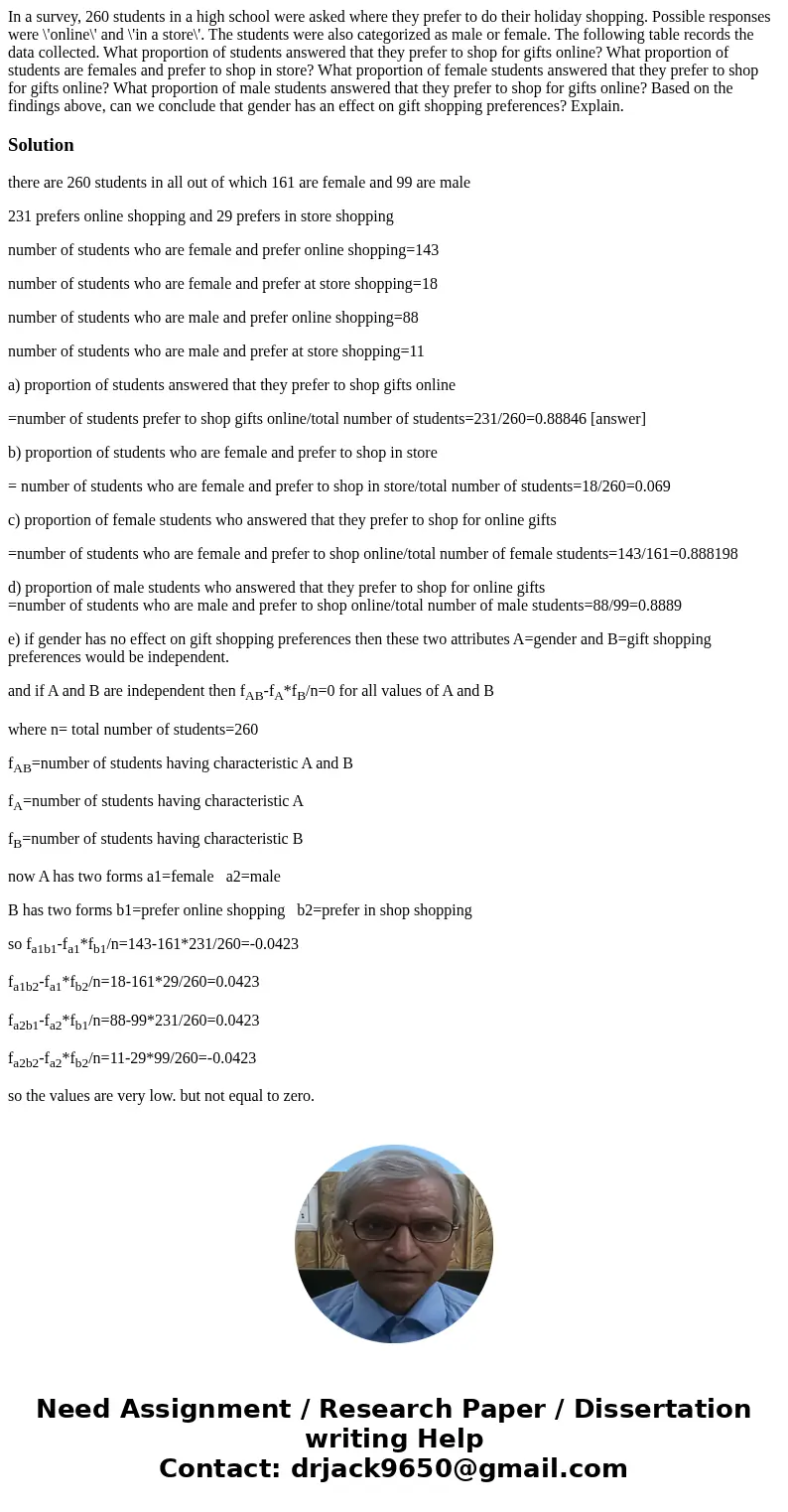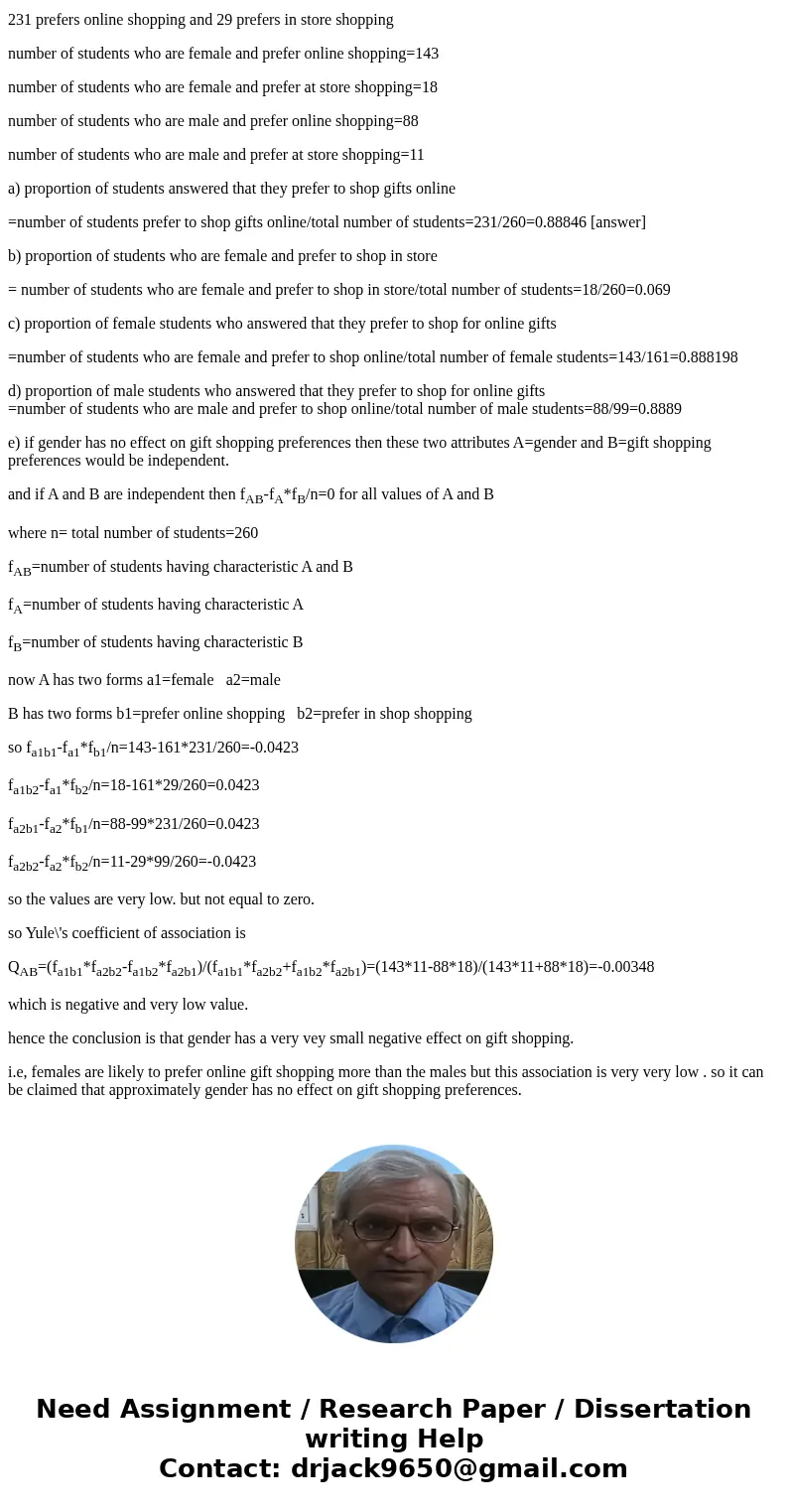In a survey 260 students in a high school were asked where t
Solution
there are 260 students in all out of which 161 are female and 99 are male
231 prefers online shopping and 29 prefers in store shopping
number of students who are female and prefer online shopping=143
number of students who are female and prefer at store shopping=18
number of students who are male and prefer online shopping=88
number of students who are male and prefer at store shopping=11
a) proportion of students answered that they prefer to shop gifts online
=number of students prefer to shop gifts online/total number of students=231/260=0.88846 [answer]
b) proportion of students who are female and prefer to shop in store
= number of students who are female and prefer to shop in store/total number of students=18/260=0.069
c) proportion of female students who answered that they prefer to shop for online gifts
=number of students who are female and prefer to shop online/total number of female students=143/161=0.888198
d) proportion of male students who answered that they prefer to shop for online gifts
=number of students who are male and prefer to shop online/total number of male students=88/99=0.8889
e) if gender has no effect on gift shopping preferences then these two attributes A=gender and B=gift shopping preferences would be independent.
and if A and B are independent then fAB-fA*fB/n=0 for all values of A and B
where n= total number of students=260
fAB=number of students having characteristic A and B
fA=number of students having characteristic A
fB=number of students having characteristic B
now A has two forms a1=female a2=male
B has two forms b1=prefer online shopping b2=prefer in shop shopping
so fa1b1-fa1*fb1/n=143-161*231/260=-0.0423
fa1b2-fa1*fb2/n=18-161*29/260=0.0423
fa2b1-fa2*fb1/n=88-99*231/260=0.0423
fa2b2-fa2*fb2/n=11-29*99/260=-0.0423
so the values are very low. but not equal to zero.
so Yule\'s coefficient of association is
QAB=(fa1b1*fa2b2-fa1b2*fa2b1)/(fa1b1*fa2b2+fa1b2*fa2b1)=(143*11-88*18)/(143*11+88*18)=-0.00348
which is negative and very low value.
hence the conclusion is that gender has a very vey small negative effect on gift shopping.
i.e, females are likely to prefer online gift shopping more than the males but this association is very very low . so it can be claimed that approximately gender has no effect on gift shopping preferences.


 Homework Sourse
Homework Sourse